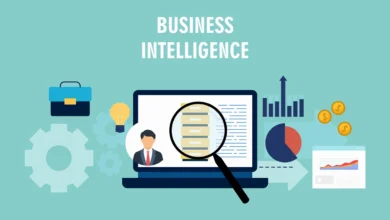Unlocking the Power of SSIS 816: Your Guide to Streamlined Data Integration

Introduction to SSIS 816
In today’s data-driven world, the ability to integrate, filter, and validate data efficiently is critical for organizations looking to leverage their data assets. SQL Server Integration Services (SSIS) 816, a powerful tool from Microsoft, is designed to simplify these complex tasks. By streamlining data administration processes across various systems and vendors, SSIS 816 has become an essential component in the data management toolkit of data analysts and IT professionals.
Understanding SSIS 816
SQL Server Integration Services (SSIS) 816 is more than just a data integration tool; it’s a comprehensive solution that addresses multiple facets of data management. Here’s a deeper dive into the core features and functionalities of SSIS 816:
Data Integration
SSIS 816 excels at integrating data from various sources, including relational databases, flat files, and cloud-based data stores. Its robust ETL (Extract, Transform, Load) capabilities allow users to:
- Extract data from diverse sources.
- Transform data through various operations such as data cleansing, aggregation, and joining.
- Load data into target systems efficiently.
Data Filtering and Validation
One of the standout features of SSIS 816 is its ability to filter and validate data seamlessly. The tool provides a range of built-in transformations that enable users to:
- Filter rows based on specific criteria.
- Validate data against predefined rules and constraints.
- Transform data to meet specific business requirements.
Error Handling and Logging
SSIS 816 offers robust error handling and logging mechanisms, ensuring that data integration processes are reliable and transparent. These features help in:
- Capturing and reporting errors during ETL processes.
- Providing detailed logs for auditing and troubleshooting.
- Ensuring data quality and integrity.
The Benefits of Using SSIS 816
Incorporating SSIS 816 into your data administration processes brings a multitude of benefits. Here are some of the key advantages:
Error Reduction
SSIS 816 significantly reduces the likelihood of errors during data integration tasks. Its advanced validation features ensure that only clean and accurate data is moved throughout the system, minimizing the risk of data corruption.
Improved Efficiency
By automating repetitive and time-consuming data integration tasks, SSIS 816 allows data analysts and IT professionals to focus on higher-value activities. This leads to increased productivity and faster turnaround times for data-related projects.
Streamlined Data Management
SSIS 816 provides a centralized platform for managing data integration processes. This streamlined approach simplifies administration and ensures consistency across various data sources and targets.
Use Cases and Examples
To illustrate the practical applications of SSIS 816, let’s explore some real-world scenarios where this tool can be invaluable:
Example 1: Data Warehouse Integration
A financial services company needs to consolidate data from multiple transactional systems into a central data warehouse. SSIS 816 can automate the extraction, transformation, and loading of data, ensuring that the data warehouse is updated in real-time with accurate information.
Example 2: Customer Data Cleansing
An e-commerce company wants to improve the quality of its customer data. SSIS 816 can be used to filter out duplicate records, validate email addresses, and standardize formatting, resulting in a clean and reliable customer database.
Example 3: Cloud Data Migration
A healthcare provider is migrating patient data to a cloud-based system. SSIS 816 can facilitate this migration by securely transferring data, ensuring compliance with data protection regulations, and validating the integrity of the migrated data.
Best Practices for Implementing SSIS 816
To maximize the effectiveness of SSIS 816 in your data integration projects, consider the following best practices:
Plan and Design
Before implementing SSIS 816, invest time in planning and designing your data integration processes. Define clear objectives, identify data sources and targets, and map out the ETL workflows.
Optimize Performance
Optimize the performance of your SSIS packages by using best practices such as:
- Minimizing data transformations within data flow tasks.
- Utilizing parallel processing where possible.
- Configuring appropriate buffer sizes and settings.
Monitor and Maintain
Monitor and maintain your SSIS packages regularly to ensure they continue to operate efficiently. Implement logging and alerting mechanisms to detect and address issues promptly.
Document and Collaborate
Document your SSIS packages and processes to ensure knowledge sharing and collaboration across your team. This documentation will also serve as a valuable reference for troubleshooting and future enhancements.
Future Trends in Data Integration
As the landscape of data management continues to evolve, tools like SSIS 816 are also advancing to meet emerging needs. Here are some trends to watch:
Increased Adoption of Cloud-Based Solutions
With the growing reliance on cloud infrastructure, SSIS 816 is evolving to support seamless integration with cloud-based data sources and platforms.
Enhanced Data Security
Data security remains a top priority for organizations. Future iterations of SSIS 816 will likely include advanced security features to protect sensitive data during integration processes.
AI and Machine Learning Integration
The integration of AI and machine learning capabilities into data integration tools like SSIS 816 will enable more intelligent data processing and decision-making.
Conclusion
SQL Server Integration Services (SSIS) 816 is a powerful tool that simplifies the complex task of data integration, filtering, and validation. By incorporating SSIS 816 into your data administration processes, you can reduce errors, improve efficiency, and streamline data management.
Whether you’re dealing with data warehouse integration, customer data cleansing, or cloud data migration, SSIS 816 offers the capabilities and reliability you need to succeed.
Ready to take your data integration to the next level? Explore the potential of SSIS 816 and see how it can transform your data management strategies. Sign up for our newsletter or request a demo to get started today.




